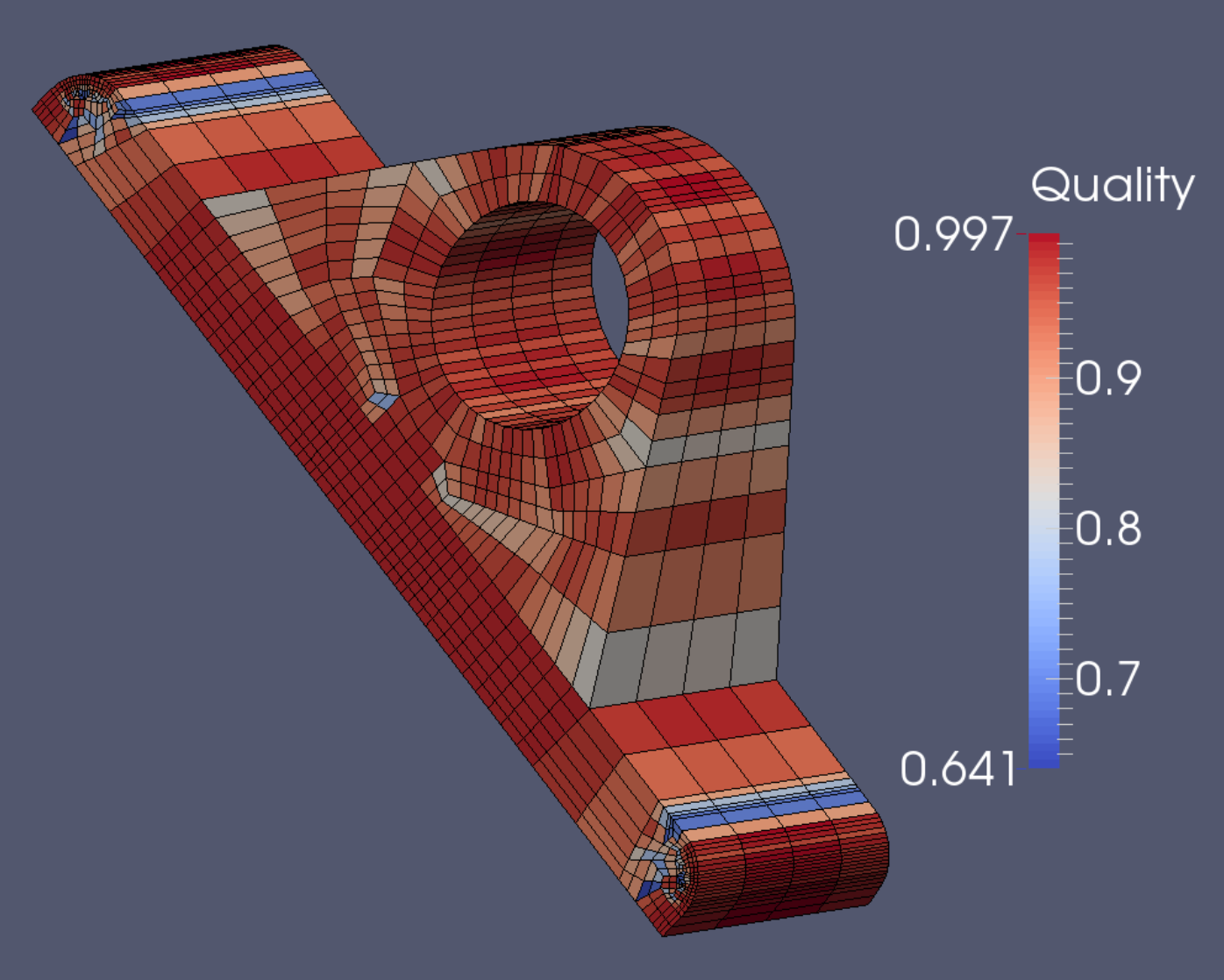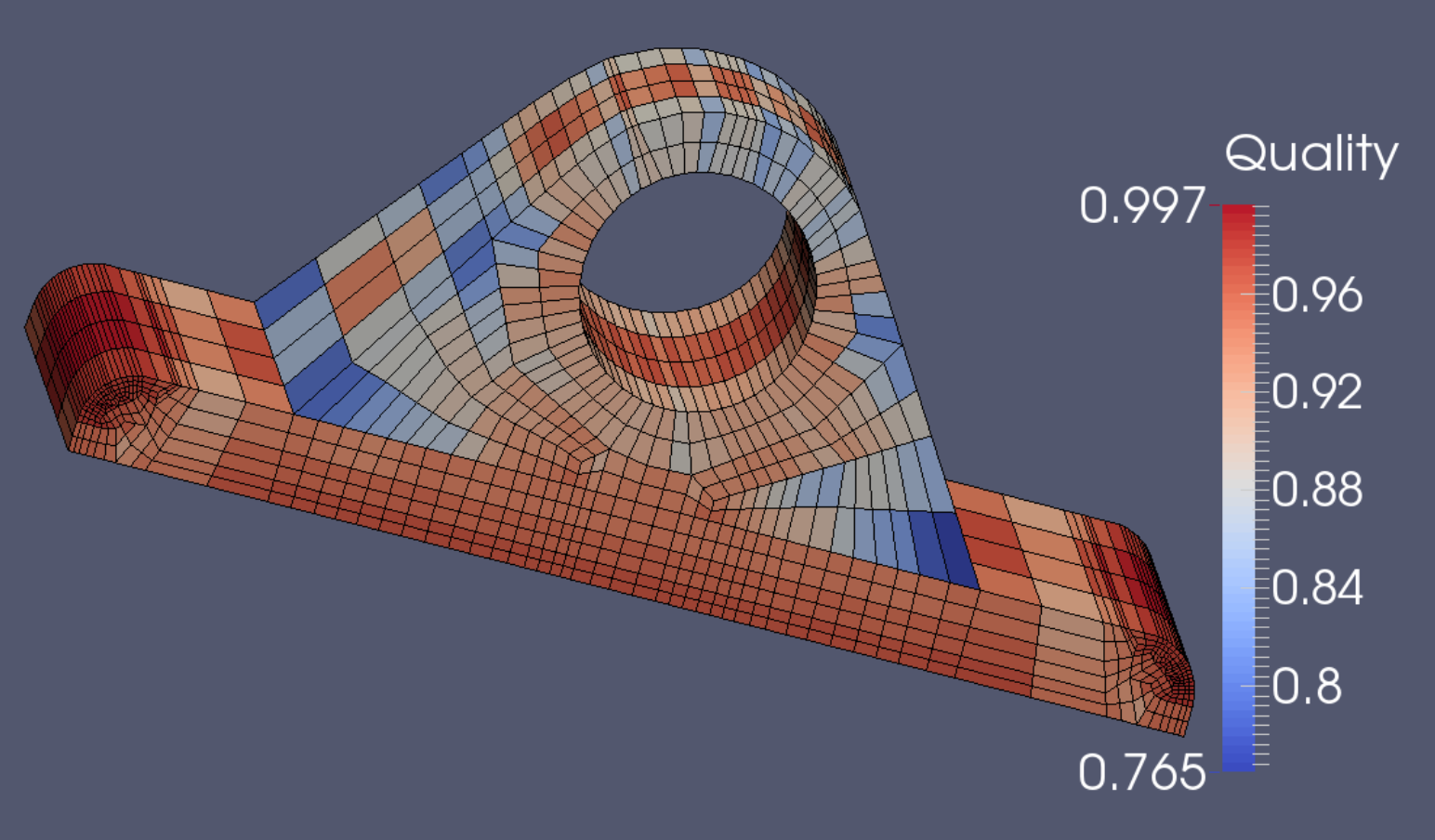Demo 14
This object is a bracket; the model can be found in the INRIA model repository as a .mesh file, and is converted by Gmsh into a .stl file. Blender imports the .stl file using its .stl import script. Its title is “bracket1” (See References). The ordinary Tris-to-Quads and Limited Dissolve commands are used to prepare the mesh for editing.
The main interest in this object is its slanted sides, and how to combine them into the geometrical landscape.
The idea of a boolean cut naturally arises. However, we remember that booleans are allergic to non-manifold meshes. The next idea to occur to us is Knife Project.
This object is a bracket; the model can be found in the INRIA model repository as a .mesh file, and is converted by Gmsh into a .stl file. Blender imports the .stl file using its .stl import script. Its title is “bracket1” (See References). The ordinary Tris-to-Quads and Limited Dissolve commands are used to prepare the mesh for editing.
The main interest in this object is its slanted sides, and how to combine them into the geometrical landscape.
The idea of a boolean cut naturally arises. However, we remember that booleans are allergic to non-manifold meshes. The next idea to occur to us is Knife Project.
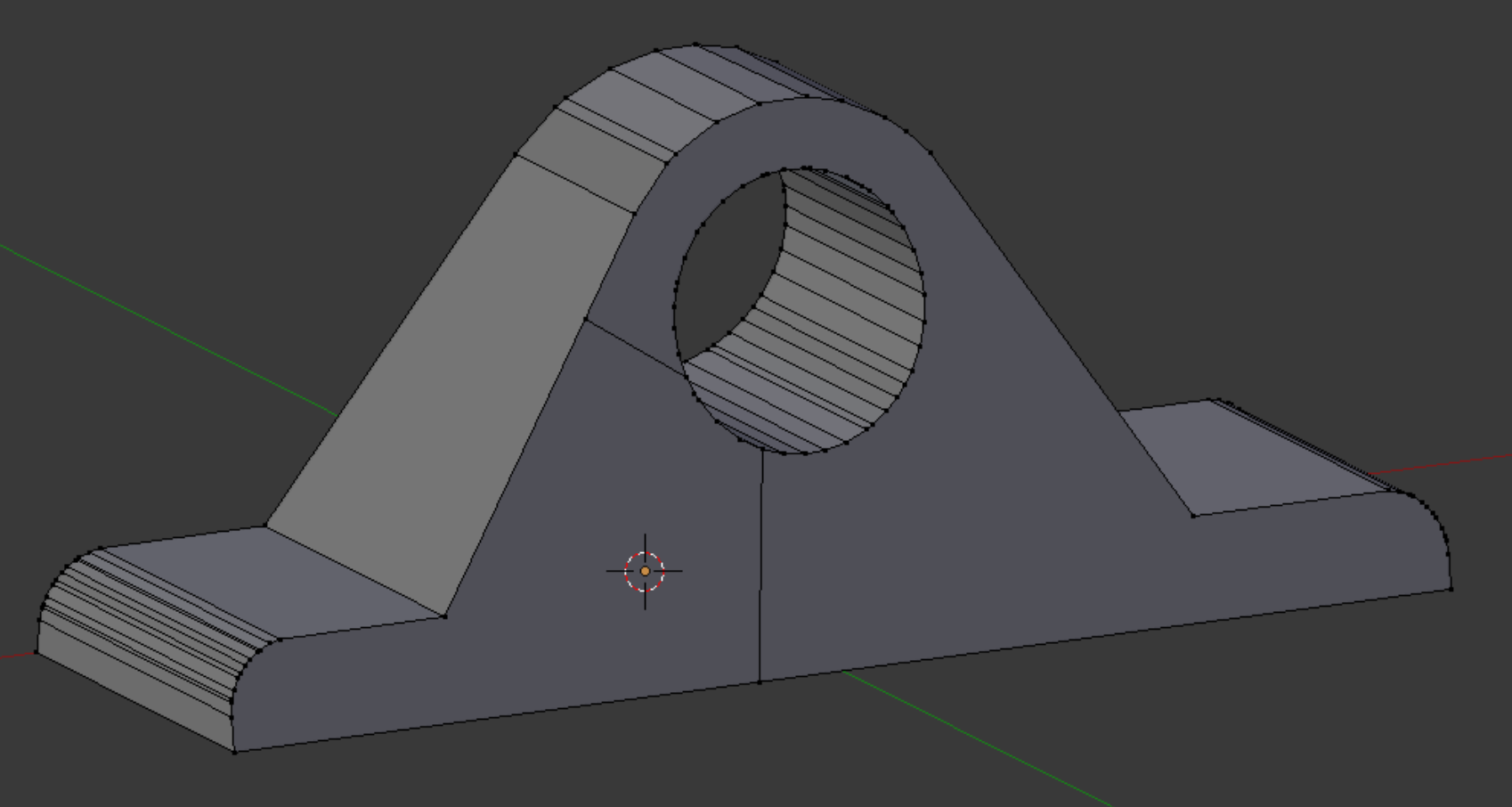
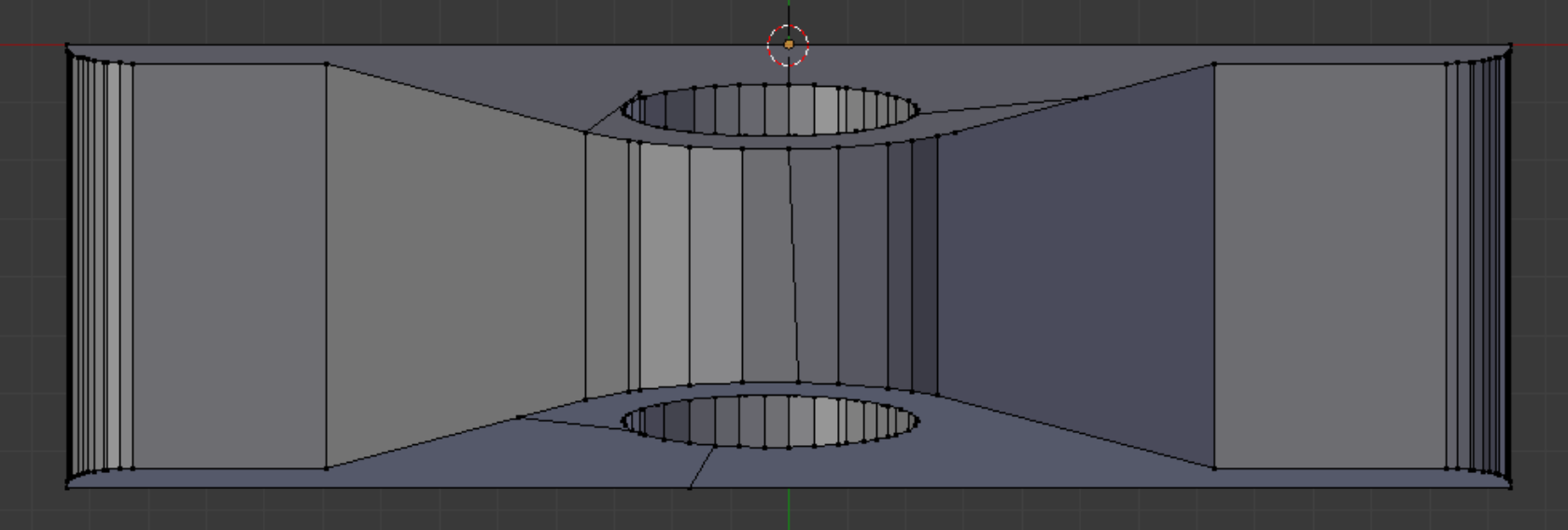
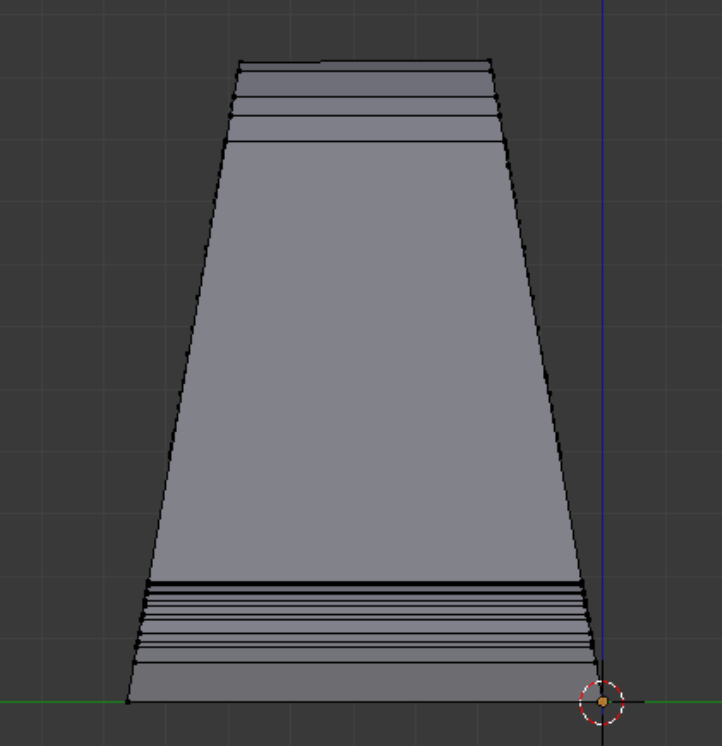
We note that the left and right flange tabs are not of equal length, a fact which will affect mirroring.
The vertices of the original thru hole are not evenly spaced, and the hole is replaced with a 32-division hole.
We create a vertical plate from a lengthwise bisection, then equip it with a typical face design and extrude on the y-axis.
The vertices of the original thru hole are not evenly spaced, and the hole is replaced with a 32-division hole.
We create a vertical plate from a lengthwise bisection, then equip it with a typical face design and extrude on the y-axis.
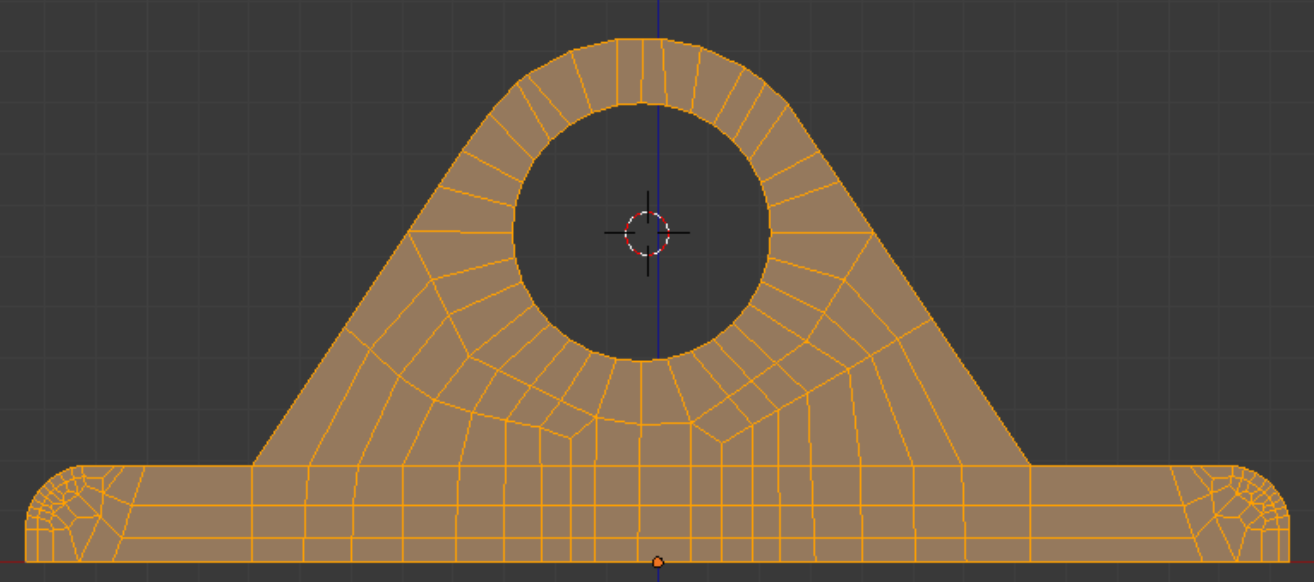
An edge is copied, converted to a separate object, (using ‘p’), scaled, and positioned, then used as a cutter. After pressing Knife Project, we check the ‘Cut through’ checkbox, to cleanly slice all the way through the mesh.
Mirroring will save us the trouble of doing this twice.
The slant is 10.000 degrees off vertical. Circle select, ‘c’, selects the cut-off faces for deletion.
The slant is 10.000 degrees off vertical. Circle select, ‘c’, selects the cut-off faces for deletion.
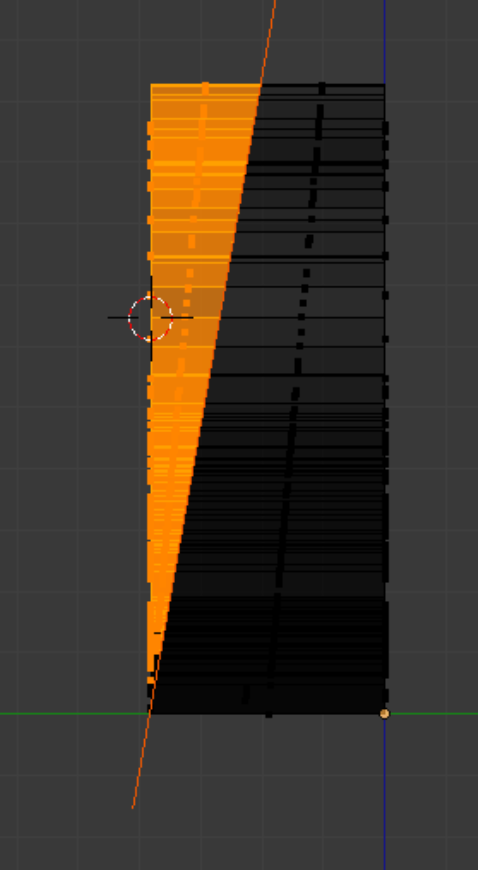
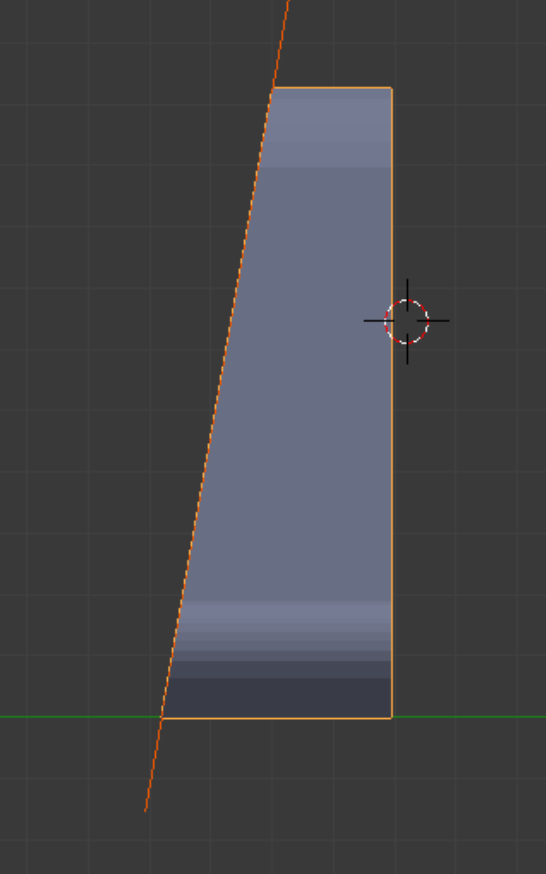
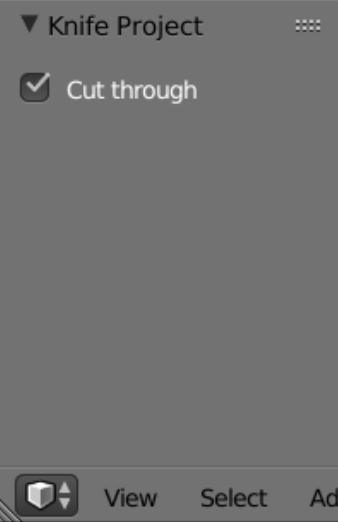
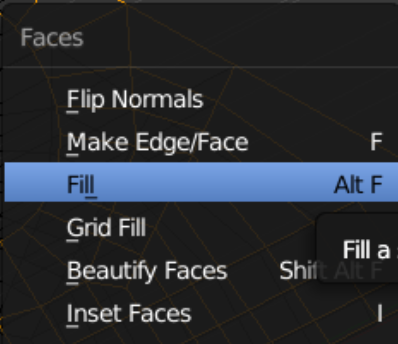
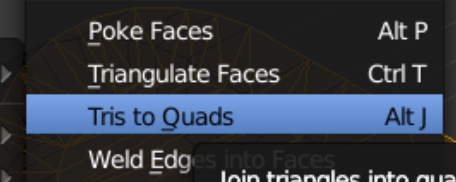
After cutting we have the task of filling in the cut-away faces. There are shortcuts to this process. After selecting the open edges in end view with a border select, ‘b’, we press Alt + ‘f’, and all the faces are filled. We follow this up with the Tris-to-Quads command, Alt + ‘j’, which leaves us with the whole area filled and a little extra. Deleting the unneeded faces and converting a few others is much faster than doing the fill-in by hand. The appearance is also better, since the automated process builds all faces with normals facing in the same direction.

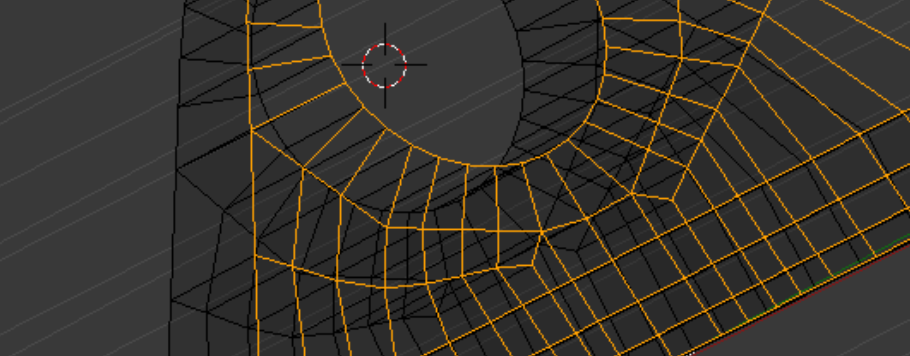
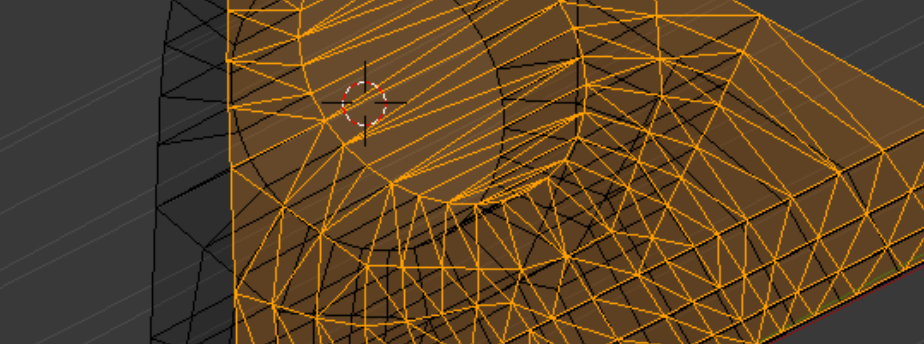
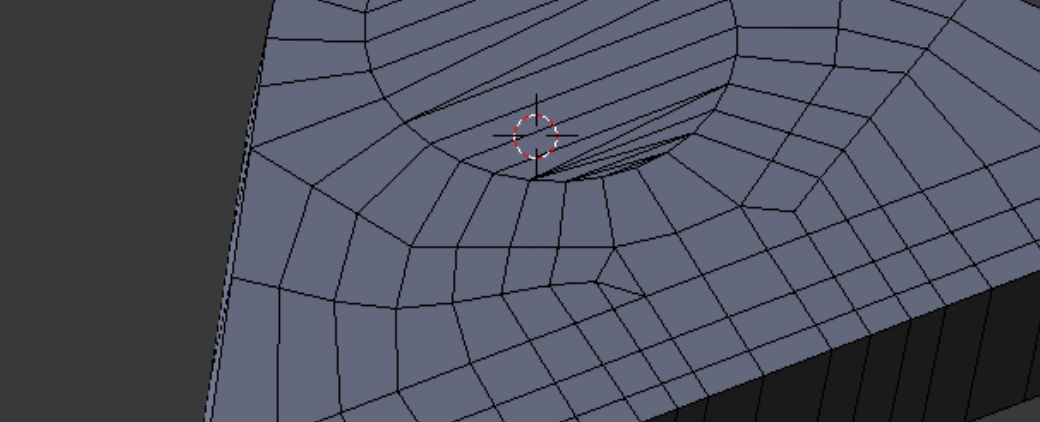
The final quality is acceptable, according to Scaled Jacobian standards (right), as well as Diagonal measure (below).
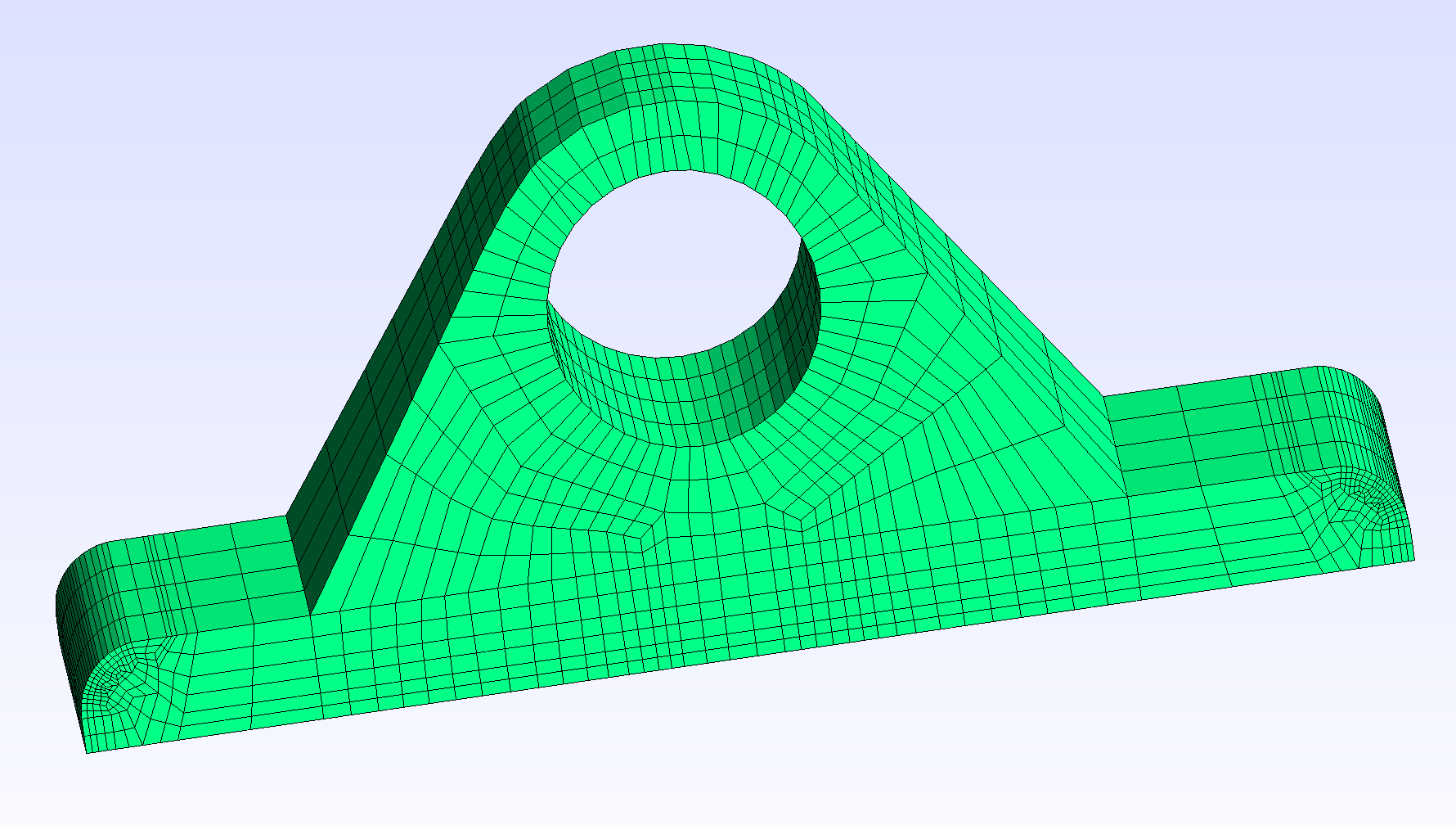
The final mirrored bracket mesh emerges from Gmsh with 3072 elements and 4380 nodes.
